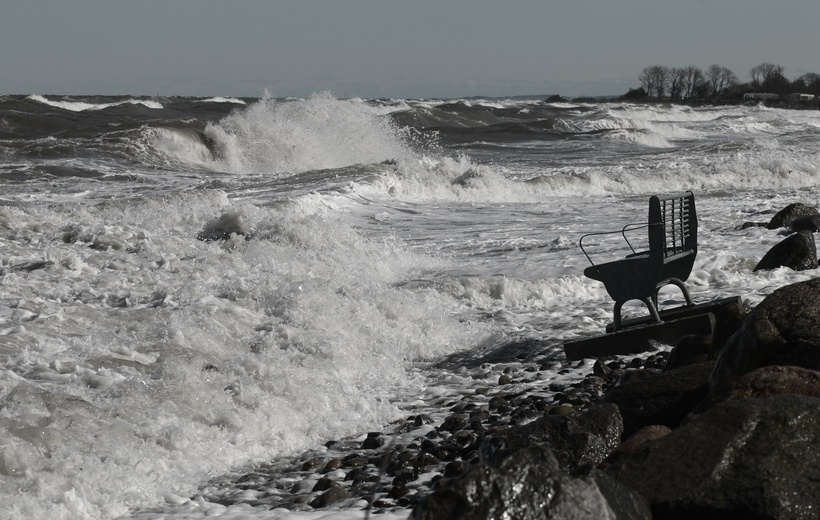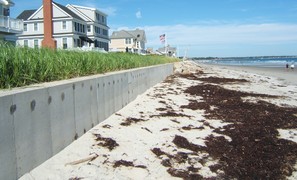Storm surges in the near future: good news for some, bad news for others

Photo: Storm surge in the Baltic Sea (Freddie Fehmarn, www.flickr.com)
Extreme sea levels are rising
Sea level rise itself does not lead to flooding events, it’s the extreme sea levels that we need to keep an eye on. Sea level rise, of course, is the major factor that changes the likelihood and height of these extreme sea levels. But more factors play a role. In addition to sea level rise, tides, storm surges and waves also contribute to these extreme sea levels. And scientific studies indicate that these extreme sea levels will probably become far more likely in this century. Even if we succeed in limiting global warming to 1.5°C above pre-industrial levels, the goal outlined in the Paris Agreement, the extreme sea levels that now occur once every 100 years on average will have become an annual event by 2080 for about half of the world's coastline. Meanwhile, many scientists report that achieving the goal of 1.5°C global warming is already beyond our reach.
Impact of storm surges will change
The frequency and intensity of storms, and the paths these storms follow are changing. As a result, storm surges, and their contribution to extreme sea levels, are also changing.
In a recent study, scientists focused on the contribution of storm surges to these extreme sea levels. Global warming will affect the occurrence and strength of storms and tropical cyclones, although these changes are highly uncertain. The strength and frequency of occurrence of storms at mid-latitudes, including most of Europe, will probably not change that much, although the path these storms generally follow will move poleward causing substantial changes in some regions. The characteristics of tropical cyclones, however, may change dramatically. They may not become more likely, but they are projected to become stronger, more intense in response to warmer sea surface temperatures. Besides, the path these tropical cyclones follow may shift poleward in a warmer climate. As a result, mid-latitude regions may experience more post-tropical storms.
In their study, the scientists distinguished three periods: the past (1951–1980), the present (1985–2014) and the near-future (2021–2050). Based on model projections, they estimated the change in magnitude and frequency of storm surges in the near future. They used a high-end scenario of climate change. This scenario is probably too dramatic for the long term. For the near future of 2021–2050, however, the impact of this scenario will not be that different from the impact of most other scenarios.
Decrease for Mediterranean, increase for the North Sea
According to the results, storm surges haven’t changed that much so far relative to the historic period of 1951–1980. It looks like in the current situation natural variability dominates over the impact of climate change. For the near future, storm surge levels are projected to change by more than 5% for approximately 25% of the coastal locations in this study. In absolute terms this is a change larger than 0.1 m. The largest and most coherent storm surge decrease occurs in the Mediterranean Sea. An increase of storm surge levels is projected for parts of the North Sea (Northwest Europe), the Yellow Sea (Eastern China), Patagonia, and northern Australia.
The storm surge decrease for the Mediterranean may be due to a decrease in storm frequency. According to the authors of this study, the increase for the coastal regions mentioned above could possibly be linked with a poleward shift of storm tracks and increased risk of post-tropical cyclones.
Small changes, large uncertainties
The authors conclude that changes in storm surge could contribute to changes in future extreme sea levels, although sea level rise will be the main driver of these changes. In addition, they stress that waves are an important contribution as well, especially since they are correlated with storm surges. However, they also stress that the projected storm surge changes are small compared to various uncertainties and natural variability.
Source: Muis et al., 2023. Earth's Future 11.






